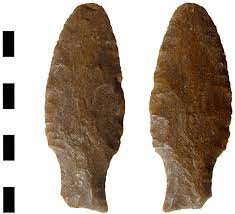Scientists from Brazil and France described a mysterious 24,000-year-old stone artifact that had been discovered in Brazil and was very different from any other artifact discovered in the continent of South America previously. The artifact was found by the members of a joint Franco-Brazilian archaeological mission in 2016 at the pre-historic site of Vale da Pedra Furada in Brazil.

The discovery of the artifact is a game-changer for the theories about the history of human settlement in the Americas. The reasons for this are that excavations have been carried out at the said site since 2011. During this time, researchers have discovered a large amount of proof of human activity there including the most ancient of which dates back to 40,000 years.
In 2016, an archaeological site that contained about 2,200 artifacts was found and dug. The number is an unimaginable one for being obtained at a single site. These artifacts have since been studied scientifically extensively.
Till now, the accepted view for the first human settlements in the Americas states that they occurred about 15,000 years ago. The discovery of the new stone artifacts in Brazil has however resulted in this view being changed completely. The radiocarbon analysis and OSL (optically stimulated luminescence) analysis has revealed that the age of the layers in which the stone artifacts were found ranges from 24,000 to 27,600 years which is the oldest ever dated.
The stone artifacts were made of quartz or quartzite and had other features which were typical of the region. But there was one tool that caused a lot of amazement among the researchers as not only was it large but also in the technique of its manufacture. It also possesses technical features which haven’t been seen earlier in a survey of Paleo-American sites. The researchers also stated that the tool was made from silted sandstone. It was 21 cm long, 18.5 m wide, and 2,9 cm thick. It had a shape of a symmetrical hexagon.
The scientists felt that the tool was almost certainly man-made that was made using technology unknown to the region at large. The technology was probably the result of an innovation for South America during the Pleistocene period. A more detailed analysis of the tool could lead to more clues about the history of human settlement in the Americas. The researchers have also established that the tool was made by at least five different stages of technological processes. This also differentiates it from the other artifacts found at the site.
Though the researchers cannot yet describe the functional purpose of the stone artifact’s hexagonal shape, they do not rule out the fact that it may well have been used for symbolic or ritualistic purposes. But this is not typical in the case of the Pleistocene period. The researchers don’t have another artifact comparable to the one recovered in Brazil as such instruments have not been found elsewhere in either of the Americas.
These facts about the artifact make its discovery exceptional. However, researchers pay more attention to the age of the artifact as it debunks the generally accepted theory for human migration to and settlement in the Americas by many millennia. More research is likely to be carried out in the future. The unique stone artifact has for now been kept in the Museum of the American Man in the city of Sao Raimundo Nonato in Brazil.











